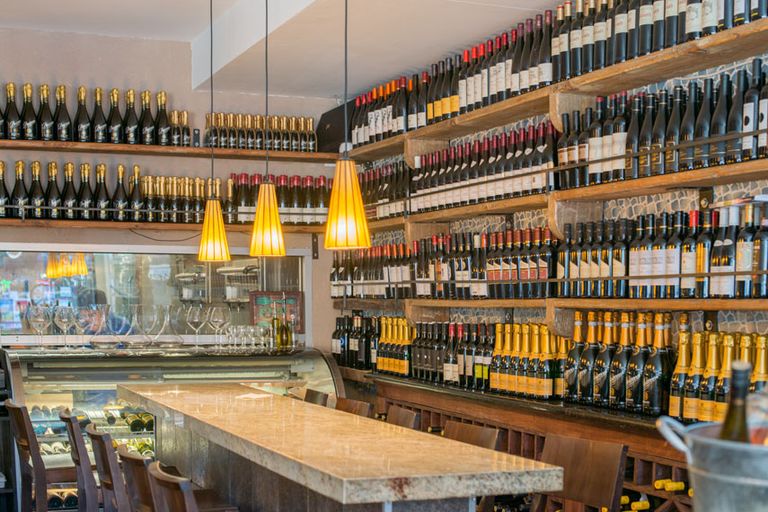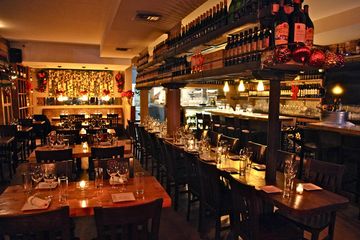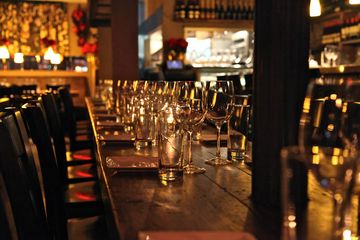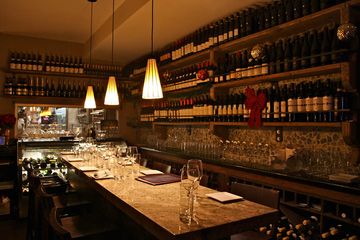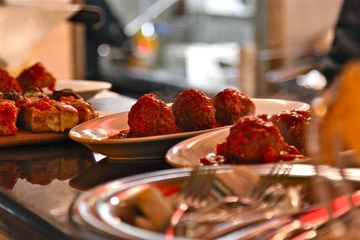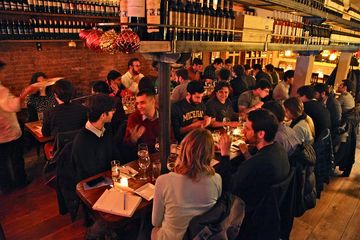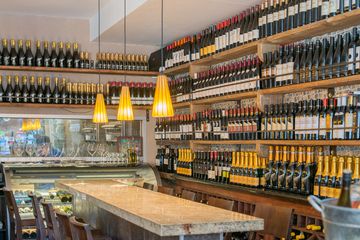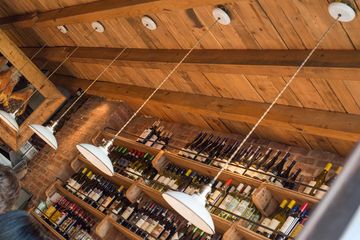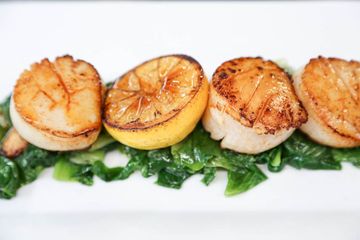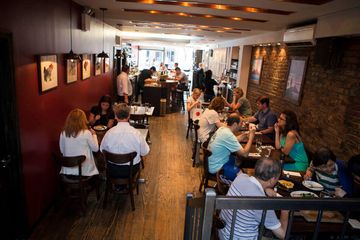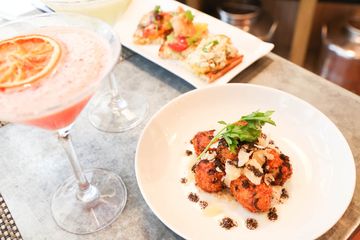When we ate at his restaurant during the summer of 2014, Vice Versa co-owner Franco Lazzari offered his advice. "If you don't like competition, don't open a restaurant in Manhattan. " This attitude towards the New York restaurant scene, one shared by fellow owner and chef Stefano Terzi, is precisely what has allowed Vice Versa to survive, grow, and thrive in the fifteen years since its inception. When the Italian restaurant first opened in 1999, its out-of-the-way West Side block was entirely populated by old-world French restaurants, most of which the men told me had been in the neighborhood for forty years or more. With its sleek interior, full bar, and contemporary Italian cuisine, Vice Versa was something entirely new - and even seemingly, they felt, out of place in its side street location in the midst of Hell's Kitchen. In retrospect, it is clear that the restaurant was not an anomaly, but a herald of coming change. "We were pioneers, " Stefano told me. The neighborhood has grown to meet its forward-thinking denizens; today, only one of the French restaurants (Tout Va Bien) is still in business, and the block is dotted with restaurants serving everything from Japanese to South African cuisine. Ironically, Vice Versa is now one of the more established restaurants on the block, thanks almost entirely to word-of-mouth recommendations and a loyal customer base. In the 90-degree weather, it was a relief to sink into one of Vice Versa's tables and peruse the menu. I did wander outside to their lovely patio for a moment. Complete with ivy-covered stucco walls, tea lights, and white umbrellas, it felt like stepping into a small piece of Italy, but just for a moment on this rather warm afternoon. Rather than ordering off the menu, I asked Stefano to surprise us. The members of the Manhattan Sideways team were treated to an excellent meal of banzino (sea bass) with olives, cherry tomatoes, and oregano, and very large sea scallops, cooked to perfection and set alongside a roasted lemon over escarole. We were started off with three different types of pasta - casoncelli, stuffed with veal, amaretto cookies, raisins, sage, pancetta and parmesan; garganelli, red beet pasta coils with alfredo sauce, roast prosciutto, and green peas; and a simple seafood-stuffed ravioli. Blending a wide variety of ingredients and flavors for a subtle and delicious eating experience, the team was simply delighted. After lunch, I chatted with Franco and Stefano over coffee, biscotti, and a pistachio cake with raspberry sauce. Both men are transplants to New York: Stefano grew up in Bergamo, Italy, while Franco was born and raised in Bologna. He came to the United States in his twenties planning on staying no more than a year. Twenty-six years later, he says that not a day goes by that he regrets his decision. Other than their shared national origin, the two told me that they could not be more different. Stefano grew up loving to cook; Franco's grandmother made food for the family, and he admits that he never took an interest in her cooking. Franco is small, with short grey hair, glasses, and a perpetual white suit. Stefano is taller, with a Dali mustache; he speaks slower and with a heavier accent than his counterpart. From my perspective, the differences between the two men are precisely what has allowed them to succeed as partners. Despite Franco's lack of interest in cooking, he loves to eat, and "makes a great critic, " according to Stefano. Franco runs the business side of the restaurant, while Stefano's domain is the kitchen. The respective roles have evidently worked well for the pair - they met working at the well regarded San Domenico (now closed), where Franco ran the front of the house and Stefano was chef de cuisine. Vice Versa presents a modern take on traditional Italian ingredients, which are imported from Italy as often as possible, through many local suppliers. The pastas are made from semolina, "which is a good thing for pasta, and for people, " Stefano said wryly, referencing the current gluten-free trend. In the last fifteen years, Stefano, Franco and their restaurant have grown and changed along with the city. "We went through two major events in New York, 9/11 and 2008, " said Franco. "On September 11, emotionally the world changed, and the 2008 financial crisis certainly changed New Yorkers' way of spending. " The goal now, " Stefano explained, "is to spend well your money. " The survival and continued success of Vice Versa is testament to its customers' ability to do just that.
